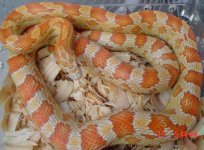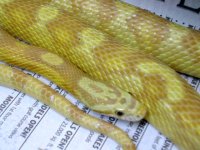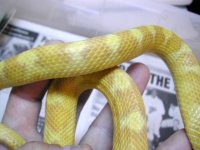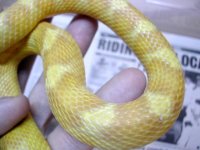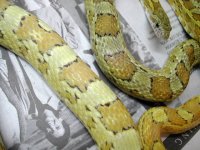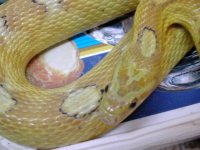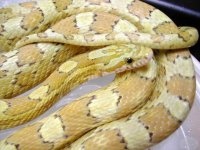Kat
I'm talkin' to YOU.
Hi guys... looks like we have an ultra-mystery on our hands... 
I've been talking with several people who are breeding Ultras, and there've been some weird stuff hatching out. In some clutches, it almost looks as if Ultra is a dominant or co-dominant gene (odd mutants pop out, where the bloodline is unlikely to have had ultra genetics in its history). In other clutches, the results aren't unexpected, or perhaps refute this claim...
If you've been breeding ultras, post your experienes (and photos!) here.
The more data we have, the better chance we have of sorting this whole mess out...!
-Kat
I've been talking with several people who are breeding Ultras, and there've been some weird stuff hatching out. In some clutches, it almost looks as if Ultra is a dominant or co-dominant gene (odd mutants pop out, where the bloodline is unlikely to have had ultra genetics in its history). In other clutches, the results aren't unexpected, or perhaps refute this claim...
If you've been breeding ultras, post your experienes (and photos!) here.
The more data we have, the better chance we have of sorting this whole mess out...!
-Kat




















